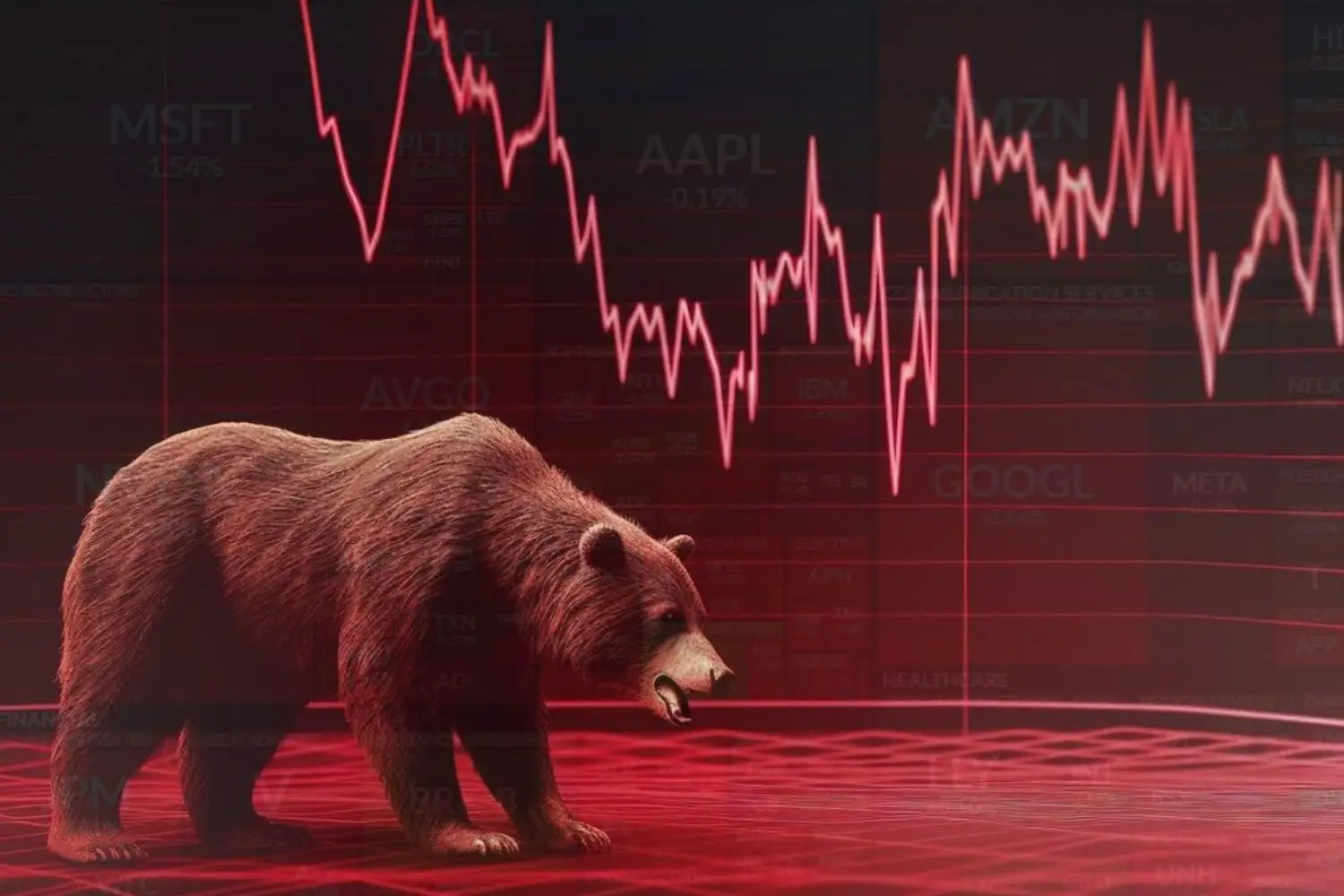Share
Homepage
News
Wall Street Slides as Global Stocks and Bitcoin Tumble: Investors Fear Fed May Slow Rate Cuts
Wall Street Slides as Global Stocks and Bitcoin Tumble: Investors Fear Fed May Slow Rate Cuts
14 tháng 11 2025
U.S. and global stocks fell sharply, while Bitcoin dropped below $100,000. Investors worry that the Federal Reserve could slow its pace of interest-rate cuts, triggering a new wave of selling in technology shares.

Wall Street Slides as Global Stocks and Bitcoin Tumble: Investors Fear Fed May Slow Rate Cuts
1. A New Wave of Selloffs Hits Wall Street
A new wave of selling gripped financial markets on Friday as S&P 500 and Nasdaq-100 futures extended losses, following the largest one-day decline on Wall Street in a month.
Technology stocks, which had fueled much of the rally this year, were once again at the center of the downturn.
Tesla shares fell 3% in early premarket trading, while chipmakers Nvidia, Micron, Intel, and AMD each dropped more than 1%.
Analysts said the pullback reflects mounting concerns that tech valuations have become overly stretched, even as the broader economy shows signs of cooling.
2. Market Optimism Fades After U.S. Government Reopens
The brief optimism that followed the end of the U.S. government shutdown has quickly faded, replaced by anxiety over monetary policy.
Investors are increasingly convinced that the Federal Reserve could slow down or pause its interest-rate cuts in the coming month.
According to CME Group data, the probability of a Fed rate cut in the next meeting has fallen to around 50%, compared with 67% a week ago and 95% a month earlier.
The shift suggests traders are adjusting expectations as delayed economic data from the shutdown period is released — data that could alter the Fed’s policy stance.
Meanwhile, the Cboe Volatility Index (VIX) — Wall Street’s so-called “fear gauge” — climbed above 21, after hovering near 17 earlier in the week.
Historically, a VIX reading above 20 signals rising risk aversion and increased hedging activity in equity markets.
3. Global Stocks and Bitcoin Sink Together
The selloff extended far beyond the U.S., with global equity markets turning red across Asia and Europe.
In China, stock declines deepened after data pointed to weakness in investment, consumption, and retail sales, reinforcing the view that China’s economic recovery remains fragile.
In the U.K., both the pound and government bonds (gilts) slumped after reports suggested the government may abandon plans to raise tax rates, reigniting fiscal uncertainty.
Meanwhile, Bitcoin fell further, slipping below the $100,000 mark — a key psychological level for crypto investors. Analysts noted that risk assets such as cryptocurrencies often mirror sentiment shifts in high-growth tech equities, both being highly sensitive to liquidity conditions.
4. White House Moves to Remove Tariffs on Latin American Imports
Amid market turbulence, the White House announced plans to eliminate import tariffs on bananas, coffee, and several apparel and textile products from four Latin American nations.
A senior administration official said the decision was part of a broader effort to “ease price pressures for consumers” and “address reciprocal tariffs” imposed by regional partners.
The move underscores Washington’s dual objectives: easing domestic inflationary concerns and strengthening trade ties in Latin America — a region where influence from China and Brazil has grown rapidly in recent years.
Analysts view this as both a strategic economic adjustment and a political signal, aimed at demonstrating responsiveness to voters frustrated with high living costs.
5. Investor Sentiment at a Crossroads
Markets are now at a critical turning point. Inflation has shown signs of moderating, yet uncertainty over the Fed’s next steps and stretched tech valuations have made investors increasingly cautious.
If the Fed delays further rate cuts, U.S. Treasury yields could remain elevated, placing additional pressure on both equities and digital assets.
However, any dovish signal from the central bank in the coming weeks could spark a short-term rebound, particularly in technology and growth sectors.
Ultimately, this market correction serves as a healthy reminder that global asset prices remain highly dependent on policy expectations. Even subtle shifts in Fed rhetoric can trigger powerful market swings.
Conclusion
After months of steady gains, Wall Street appears to be entering a necessary cooling phase.
While fear is rising, many economists maintain that the U.S. economy’s fundamentals remain solid, suggesting that the current pullback may offer buying opportunities for long-term investors.
In the near term, however, volatility is likely to persist as traders digest new economic data and fresh Fed signals in the weeks ahead.
FQAs
1. Why are U.S. stocks and Bitcoin falling together?
→ Both markets are reacting to fears that the Fed may slow or halt its rate cuts. With liquidity expectations weakening, investors are pulling back from high-risk assets like tech stocks and cryptocurrencies.
2. What does the rise in the VIX Index indicate?
→ A VIX reading above 20 typically signals increasing market fear and volatility. Investors tend to rotate toward safer assets such as gold, the U.S. dollar, or government bonds.
3. What’s the significance of the U.S. tariff removal for Latin American nations?
→ It’s a bid to ease inflationary pressures and strengthen regional relations, though the immediate economic impact on U.S. consumer prices may be limited.
4. How might the Fed’s policy shift affect markets next month?
→ The probability of a rate cut has fallen to about 50%. The Fed may wait for additional economic data before acting, keeping markets on edge and volatility elevated.
All information on our website is for general reference only, investors need to consider and take responsibility for all their investment actions. Info Finance is not responsible for any actions of investors.







